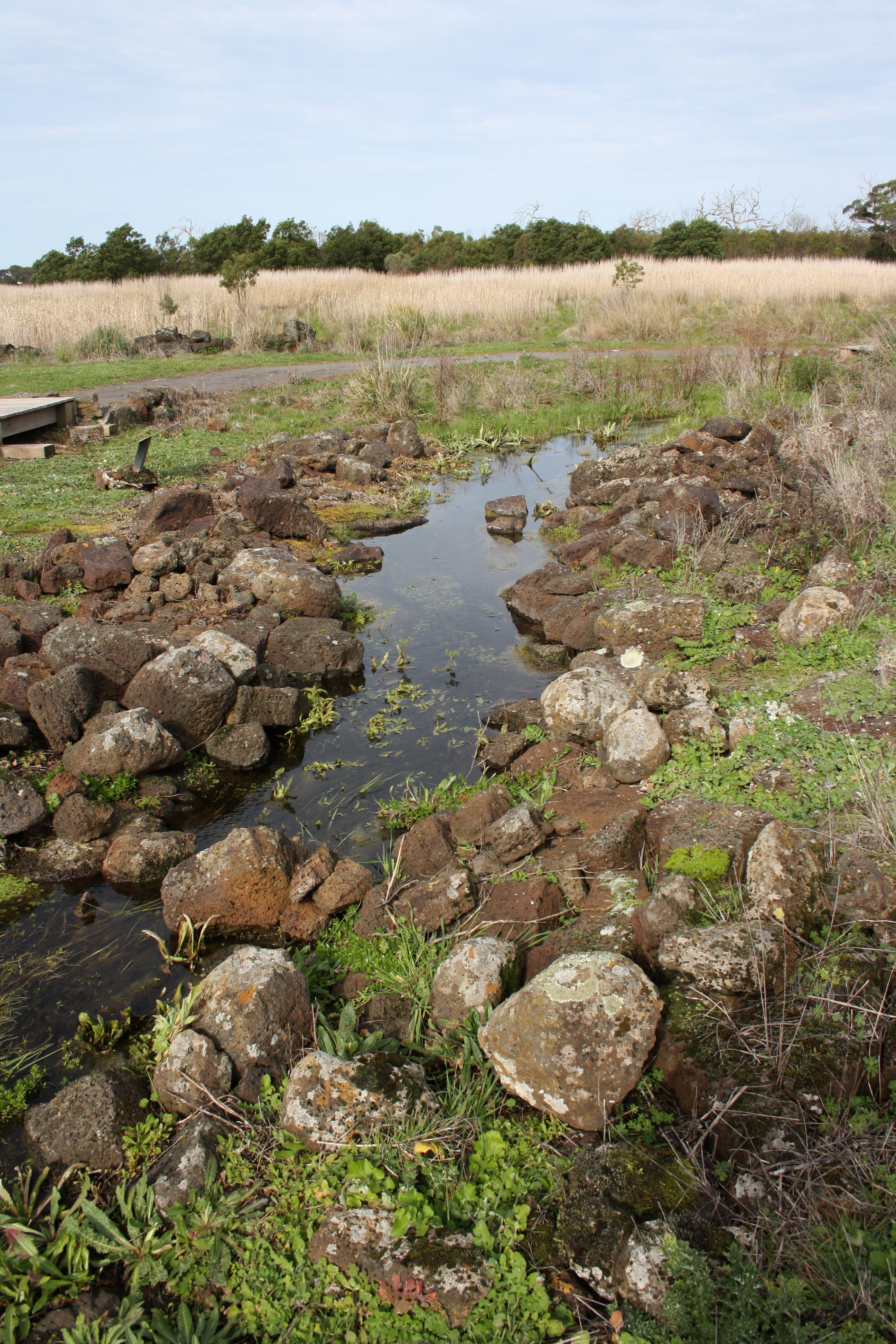

Ownership is a key element for the effective protection and management of the Budj Bim Cultural Landscape. However, access to and ownership of the land was denied to Gunditjmara during great part of the 19th century when, after the arrival of British colonial invaders, Gunditjmara Country was occupied and access to the land became increasingly denied to Gunditjmara Traditional Owners until the 1980s. Nevertheless, and throughout the period of colonisation, the Gunditjmara retained connections to the aquaculture system through knowledge of the stories of Budj Bim and associated land-use practices.
From 1984, land was increasingly returned to and purchased by Gunditjmara Traditional Owners. In 2007, with the recognition of the native title rights of Gunditjmara, some parts of Country were returned to Gunditjmara. Today, Aboriginal organisations own and manage the World Heritage site of Budj Bim with the exception of Budj Bim National Park, which is co-operatively managed by the Gunditjmara Traditional Owners and the Victorian Government.
The ownership of the land enables Gunditjmara cultural traditions, knowledge and practices to be expressed in the present and into the future as a consequence of the recognition of both Gunditjmara custodial and native title rights and obligations.
This building block is enabled by the recognition of the Aboriginal Land (Lake Condah and Framlingham Forest) Act 1987 (Vic.) and the determinations of the native title of the Gunditjmara in 2007 under the Native Title Act 1993 (Cwlth) and further arrangements of joint-management with the Government of Victoria.
- The return of Country and the renewal of Gunditjmara knowledge and practices - concerning aquaculture in particular - have been powerful actions that have enabled Gunditjmara to continue their sense of connection, spirit and feeling of the place. As a consequence, current generations are able to grow up on Gunditjmara-owned Country, which provides a powerful mechanism for intergenerational cultural strengthening.
- Ownership of the land is a fundamental need for the management and conservation of Aboriginal and Indigenous land and landscapes and is essential to Gunditjmara wellbeing and cultural-thriving. The World Heritage property of Budj Bim is comprised of lands owned or jointly managed by the Gunditj-Mirring Traditional Owners Aboriginal Corporation and Winda-Mara Aboriginal Corporation. Therefore the site and its boundaries are assured of free, prior and informed consent by virtue of their ownership, management and control.
- Gunditjmara land ownership has demonstrated to governments that the Gunditjmara have the ability to manage their Country; and has enabled Gunditjmara to increasingly engage with the broader community.